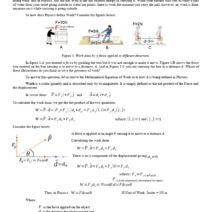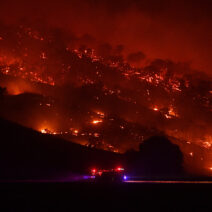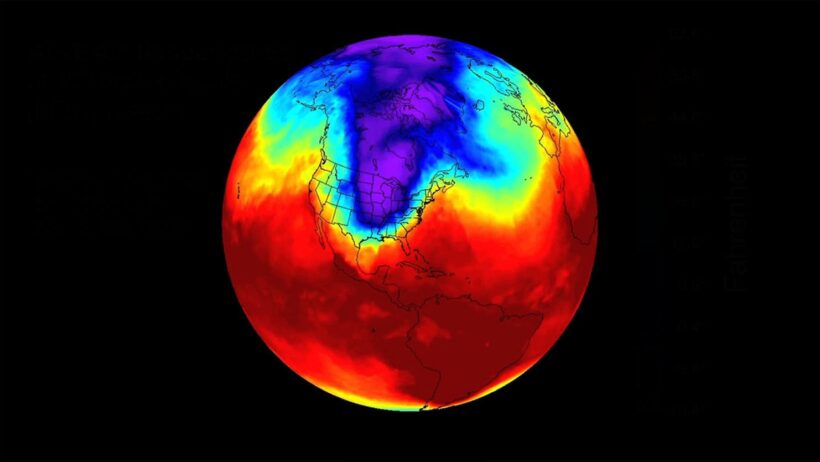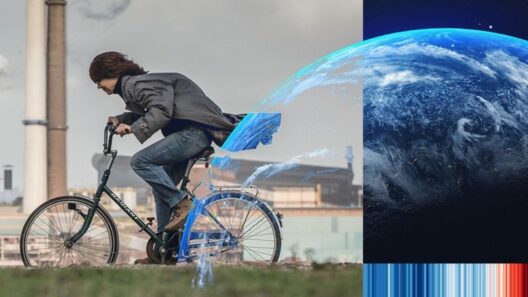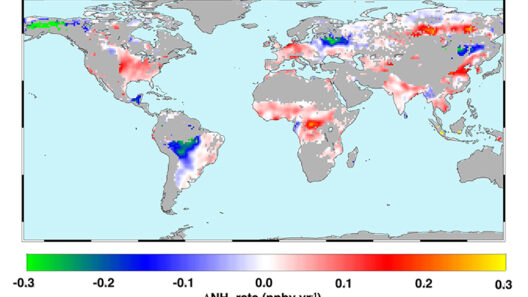The phenomenon of the “polar vortex” has garnered considerable attention in discussions surrounding climate change and its paradoxical effects on winter weather patterns. Understanding the intricacies of this atmospheric anomaly provides insights not only into meteorology but also into the unpredictable repercussions of a warming planet. The polar vortex is a large-scale cyclone that typically resides over the polar regions, containing extremely cold air. However, recent studies suggest that climate change may be altering the behavior of this system, leading to colder winters in some areas while exacerbating warming in others.
Historically, the polar vortex functions as a protective barrier that keeps frigid Arctic air contained within the polar regions during winter months. This complex system is governed by various atmospheric dynamics including jet streams, temperature gradients, and pressure systems. However, as global temperatures rise due to the relentless release of greenhouse gases, myriad shifts occur in the atmospheric conditions that can destabilize the polar vortex.
One of the most prominent discussions surrounding the polar vortex is its tendency to become distorted or weakened during periods of significant warming. When the polar vortex is stable, it efficiently confines cold polar air within its bounds. Alternatively, when this system is perturbed—often due to influences such as the Arctic Oscillation or the warming of the Arctic region—the polar vortex can split or migrate, allowing frigid Arctic air to plunge southward into more temperate regions. This leads to a phenomenon where places that traditionally enjoy milder winters may experience dramatic drops in temperature, as occurred in various instances across North America and Europe.
In addressing this paradox, one must explore the explicit connections between global warming and winter cold spells. Enhanced warming in the Arctic, often referred to as Arctic amplification, alters the temperature differential between the equator and the poles. This disruption can slow down the jet stream—a river of fast-moving air in the upper atmosphere that plays a crucial role in weather patterns. A weakened jet stream can adopt more pronounced meanders, allowing cold Arctic air to sweep down into regions that would normally remain insulated from such harsh climatic conditions.
Contrarily, the aforementioned phenomena promote an intriguing query: how can an overall warming planet simultaneously allow for colder winters? The answer lies in recognizing the complex interdependencies within our climate system. The variability of winter temperatures does not directly negate the long-term trends observed in global climate data. In fact, increasingly irregular winter climates serve as a reminder that climate change impacts are multifaceted and often counterintuitive.
Additionally, it is crucial to appreciate how climate change and human activities exacerbate these temperature oscillations. Urbanization, deforestation, and pollution contribute not only to rising average temperatures but also to localized weather disruptions. As cities expand and the natural landscape transforms, the urban heat island effect can further complicate meteorological responses, amplifying temperature extremes both in winter and summer.
Scientific discourse emphasizes the need for continuous monitoring and research on polar vortex behavior. Scientists are utilizing advanced climate models to project how variations in greenhouse gas emissions will influence polar vortex dynamics in the future. Understanding this linkage is vital for developing predictive frameworks that can help societies adapt to the profound changes unfolding across our climate system.
Furthermore, public perception of winter weather phenomena plays a pivotal role in how climate change is understood. Individuals are often motivated by tangible experiences, and a weather event—a severe cold snap, a snowstorm—can spark conversations about the realities of climate change. However, these discussions sometimes diminish the nuances involved in the latitudinal and temporal variability of climate dynamics. The juxtaposition of cold spells amidst a warming climate challenges societal perspectives, as people grapple with witnessing extreme weather that contradicts their assumptions about climatic trends.
Education and outreach are imperative in fostering a more informed public understanding. By illuminating the scientific principles that underpin these weather phenomena, one can cultivate a sense of curiosity and engagement surrounding climate issues. Incorporating interactive platforms that utilize real-time data on polar vortex fluctuations could empower communities to better comprehend and respond to climate-related challenges.
Moreover, local governments and policymakers must prioritize climate resilience strategies in their urban and infrastructural planning. With the increasing unpredictability of winter patterns, measures such as improving insulation, enhancing snow removal protocols, and investing in renewable energy infrastructure must come to the forefront of climate action initiatives. Such strategies not only address immediate concerns related to cold weather disruptions but also align with broader goals towards mitigating the overarching impacts of climate change.
In conclusion, the polar vortex serves as a compelling emblematic case of how climate change can yield seemingly paradoxical outcomes. The interplay between warming Arctic temperatures and intermittent bouts of severe winter cold challenges conventional notions about seasonal weather patterns. As we strive to navigate the intricacies of our changing climate, it is essential to maintain vigilance in understanding the polar vortex’s evolving dynamics. Only through continuous inquiry and informed dialogue can we hope to unravel the enigmatic relationships between global warming and winter realities, ultimately engendering proactive responses against the ever-pressing threat of climate change.
